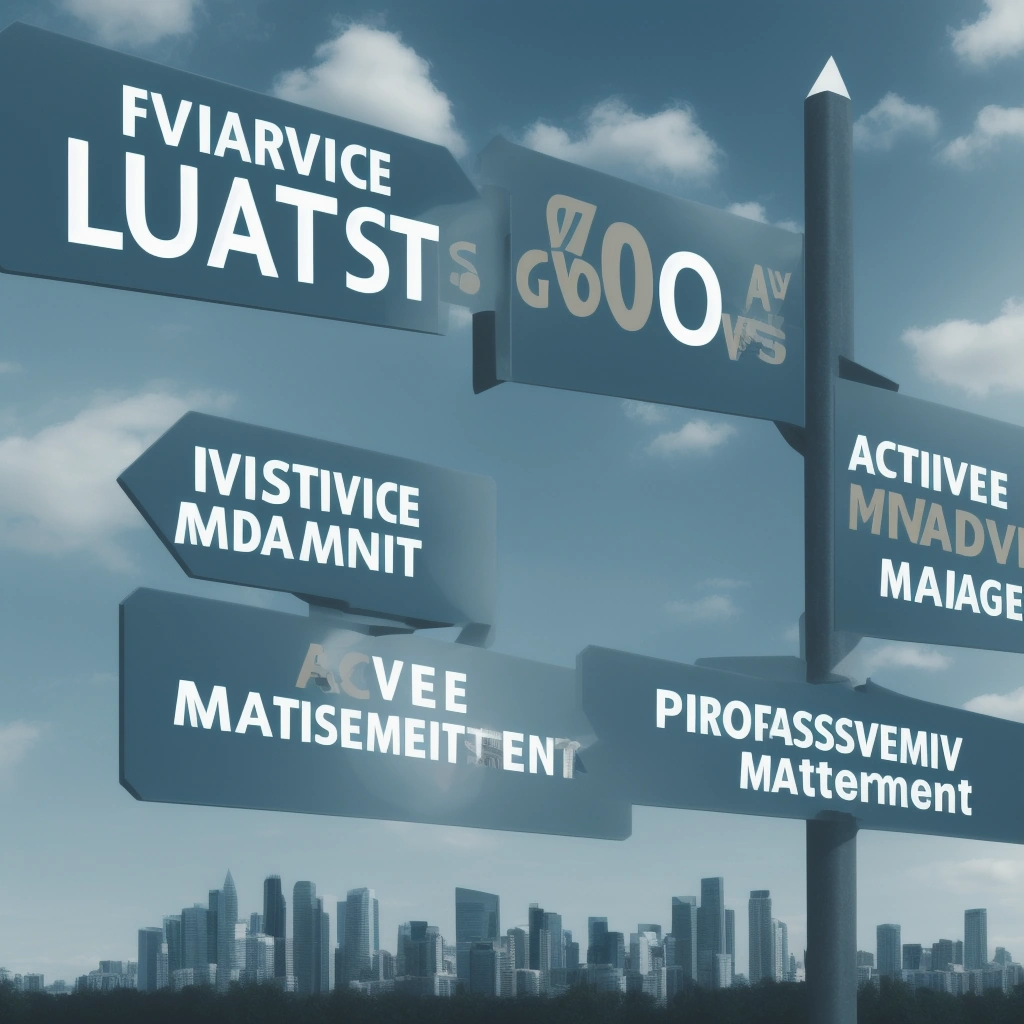
Estate Planning Essentials for Modern Retirees: A Complete Guide
The Evolving Landscape of Estate Planning for Retirees
Retirement, once envisioned as a period of uninterrupted leisure, now necessitates proactive and sophisticated financial and legal planning, particularly in the realm of estate matters. Modern retirees navigate a landscape far more intricate than that faced by previous generations, grappling with the complexities of digital assets, the nuances of blended families, the ever-shifting sands of tax laws, and a heightened desire for impactful philanthropic endeavors. Estate planning is no longer a simple matter of distributing tangible possessions; it’s a holistic strategy for preserving wealth, minimizing tax burdens, and ensuring that one’s values and wishes are honored long after they are gone.
This guide provides a comprehensive overview of estate planning essentials, empowering retirees to secure their legacy and ensure their intentions are meticulously carried out. One of the key shifts driving the evolution of estate planning is the increasing lifespan of retirees. With people living longer, the potential for cognitive decline and the need for long-term care planning have become paramount. A well-structured estate plan should incorporate provisions for managing assets and making healthcare decisions in the event of incapacity, often through the use of durable powers of attorney and healthcare proxies.
Furthermore, the rise of blended families, with their complex dynamics and potential for conflict, demands careful consideration when structuring inheritance plans. Clear and unambiguous documentation is essential to avoid disputes and ensure that all family members are treated fairly, according to the retiree’s wishes. Moreover, the digital revolution has introduced a new dimension to estate planning: the management and transfer of digital assets. From online banking accounts and cryptocurrency holdings to social media profiles and digital photo libraries, these assets often hold significant financial and sentimental value.
Failing to address digital assets in an estate plan can create significant challenges for heirs, who may struggle to access or manage these accounts. A comprehensive inventory of digital assets, along with clear instructions for accessing and managing them, is now an essential component of any modern estate plan. Furthermore, the increasing focus on charitable giving as a component of retirement wealth management requires careful planning to maximize both philanthropic impact and tax benefits. Strategies such as charitable remainder trusts and donor-advised funds can provide retirees with a way to support their favorite causes while also reducing their estate tax liabilities.
Navigating these complexities requires a proactive approach to both estate planning and retirement planning, working closely with qualified professionals in law, finance, and tax. By taking the time to develop a comprehensive and well-thought-out estate plan, retirees can gain peace of mind knowing that their legacy is secure, their loved ones are protected, and their wishes will be honored for generations to come. This includes understanding the implications of wealth transfer strategies, such as wills and trusts, and implementing tax-efficient inheritance plans to minimize estate tax liabilities. Open family communication about these plans is also crucial for fostering transparency and harmony, ensuring that everyone understands the retiree’s intentions and preventing potential disputes.
Mastering Wealth Transfer Strategies: Wills vs. Trusts
Wealth transfer strategies are the cornerstone of estate planning, dictating how your assets will be distributed and managed after your passing. While wills are fundamental documents outlining your wishes, they often prove insufficient for complex estates, particularly those involving significant retirement wealth management. Trusts, on the other hand, offer a more sophisticated approach, providing greater control, privacy, and potential tax advantages. Understanding the nuances of each option is crucial for retirees seeking to optimize their estate plans and ensure their beneficiaries receive the maximum benefit.
The choice between a will and a trust, or a combination of both, hinges on individual circumstances, asset types, and specific estate planning goals. For instance, a simple will might suffice for a retiree with modest assets and straightforward wishes, while a trust becomes increasingly advantageous as wealth and complexity grow. Revocable living trusts are a popular choice for retirees as they allow you to maintain control over your assets during your lifetime while ensuring a seamless transfer upon death, avoiding the often lengthy and costly probate process.
You, as the grantor, can act as the trustee, managing the assets within the trust. This provides flexibility and allows you to adapt the trust to changing circumstances. Upon your death, a successor trustee takes over, distributing the assets according to your instructions. Irrevocable trusts, such as life insurance trusts or qualified personal residence trusts (QPRTs), offer different benefits, primarily focused on minimizing estate taxes by removing assets from your taxable estate. A life insurance trust, for example, can hold a life insurance policy, preventing the policy’s proceeds from being included in your estate, potentially saving your heirs a significant amount in inheritance tax.
Choosing the right wealth transfer strategy requires careful consideration of your specific financial situation, family dynamics, and long-term goals. For example, a couple with substantial real estate holdings might find a QPRT beneficial, as it allows them to transfer their residence to their beneficiaries while continuing to live in it for a specified term, effectively removing the property’s future appreciation from their taxable estate. Conversely, those primarily concerned with protecting life insurance proceeds and providing liquidity to their heirs might opt for a life insurance trust.
Furthermore, individuals with digital assets, such as cryptocurrency or valuable online accounts, should consider how these assets will be managed and transferred within their chosen estate planning structure. Consulting with an experienced estate planning attorney is essential to navigate these complexities and determine the most suitable structure for your unique circumstances. They can help you weigh the pros and cons of each option, ensuring your estate plan aligns with your retirement planning and wealth management objectives, while also considering tax-efficient inheritance strategies and charitable giving opportunities.
Tax-Efficient Inheritance: Minimizing Estate Tax Liabilities
Tax-efficient inheritance planning is crucial to maximizing the value passed on to beneficiaries. The federal estate tax, while impacting only the wealthiest estates (currently those exceeding a substantial exemption amount), necessitates careful planning. Strategies like gifting assets during your lifetime (within annual gift tax exclusion limits), utilizing charitable remainder trusts (CRTs), and strategically funding life insurance policies can significantly reduce estate tax liabilities. Furthermore, understanding the tax implications for beneficiaries receiving inherited assets is essential.
For instance, inherited IRAs and 401(k)s are generally taxable as ordinary income, while inherited Roth IRAs may be tax-free. State estate and inheritance taxes also vary widely, requiring tailored planning based on your state of residence. Recent tax law changes, such as those introduced by the Tax Cuts and Jobs Act, have significantly altered the estate tax landscape, making ongoing review and adjustments imperative. Beyond these fundamental strategies, sophisticated estate planning techniques can further minimize inheritance tax burdens and optimize wealth transfer.
Consider the strategic use of Qualified Personal Residence Trusts (QPRTs), which allow you to remove your home’s future appreciation from your taxable estate while continuing to reside there. This is particularly beneficial in areas with rapidly appreciating real estate. Another advanced technique involves establishing Family Limited Partnerships (FLPs) to consolidate and manage family-owned assets, potentially applying valuation discounts for estate tax purposes. However, these strategies require careful implementation and legal counsel to ensure compliance with IRS regulations and to avoid potential challenges.
Life insurance, when strategically integrated into retirement wealth management and estate planning, offers a powerful tool for tax-efficient inheritance. Irrevocable Life Insurance Trusts (ILITs) can hold life insurance policies, keeping the death benefit outside of your taxable estate. This provides liquidity to your heirs to pay estate taxes or other expenses without having to liquidate other assets. The premiums paid into the ILIT can be structured as gifts, utilizing the annual gift tax exclusion to minimize gift tax implications.
Furthermore, the cash value of life insurance policies can accumulate tax-deferred, providing another layer of tax efficiency within your overall retirement portfolio and estate plan. Consulting with a qualified financial advisor and estate planning attorney is essential to determine the appropriate type and amount of life insurance for your specific needs. The complexities of tax-efficient inheritance underscore the importance of proactive and personalized planning. For example, a retiree in New York, which has both estate and inheritance taxes, will face a different set of challenges compared to someone in Florida, which has neither.
Moreover, the rules surrounding inherited retirement accounts are constantly evolving, as seen with the SECURE Act’s changes to required minimum distributions for beneficiaries. Engaging with a Certified Financial Planner (CFP) or an Enrolled Agent (EA) who specializes in retirement planning and estate tax can provide invaluable guidance. These professionals can help you navigate the ever-changing tax landscape, optimize your wealth transfer strategies, and ensure that your estate plan aligns with your overall financial goals, ultimately maximizing the value passed on to your loved ones while minimizing tax liabilities.
Digital Asset Considerations: Planning for the Digital Afterlife
Digital assets, including cryptocurrency, online accounts, social media profiles, and digital photos, are increasingly valuable components of modern estates. Failing to address these assets in your estate plan can create significant challenges for your heirs, potentially leading to lost wealth and protracted legal battles. Create a comprehensive inventory of your digital assets, including usernames, passwords, and access instructions. This inventory should be securely stored and regularly updated, reflecting the dynamic nature of the digital landscape.
For example, a retiree with a substantial cryptocurrency portfolio should meticulously document wallet addresses, exchange logins, and recovery phrases, as these are often the keys to accessing significant retirement wealth management holdings. Without this information, these assets could become irretrievable, diminishing the inheritance available to beneficiaries and complicating the estate settlement process. Designate a digital executor in your will or trust, granting them the authority to manage and distribute these assets according to your wishes.
This individual should be tech-savvy and trustworthy, capable of navigating the complexities of online accounts and digital currencies. Clearly outline the digital executor’s responsibilities and powers in your estate planning documents, specifying how you want your digital legacy to be handled. For instance, you might direct the executor to close certain social media accounts, preserve digital photos for family archives, or liquidate cryptocurrency holdings and distribute the proceeds as part of the overall wealth transfer strategy.
This proactive approach ensures that your digital footprint is managed according to your intentions, minimizing potential disputes and maximizing the value passed on to your loved ones. Consider using a password manager or a secure online vault to store sensitive information related to your digital assets. These tools provide a centralized and encrypted location for usernames, passwords, and other critical details, making it easier for your digital executor to access the necessary information when the time comes.
Furthermore, explore the option of creating ‘digital wills’ or specific instructions within your estate plan that detail your preferences for each digital asset. Some states have enacted laws addressing digital asset access, but proactive estate planning remains essential. The Uniform Fiduciary Access to Digital Assets Act (UFADAA) provides a framework, but its adoption varies by state, underscoring the need for personalized legal advice. Consulting with an estate planning attorney familiar with digital asset laws is crucial to ensure your plan is legally sound and effectively protects your digital legacy, contributing to a tax-efficient inheritance for your heirs.
Charitable Giving Optimization: Leaving a Legacy of Generosity
Charitable giving optimization allows retirees to support causes they care about while potentially reducing their tax burden, a key consideration in comprehensive estate planning and retirement wealth management. Charitable remainder trusts (CRTs) provide income to the donor for a specified period, often their lifetime or a term of years, with the remaining assets passing to a charity upon their death. This strategy not only supports philanthropic endeavors but can also provide a stream of income during retirement and potentially reduce capital gains taxes on appreciated assets.
For example, a retiree with a highly appreciated stock portfolio could contribute those shares to a CRT, avoid immediate capital gains taxes, receive income from the trust, and ultimately benefit their chosen charity. The income received is taxable, but the initial contribution generates a charitable tax deduction, making CRTs a powerful tool for tax-efficient inheritance and retirement planning. Charitable lead trusts (CLTs) operate in reverse, providing income to a charity for a set term, with the remaining assets reverting to the donor or their beneficiaries.
CLTs are particularly attractive when interest rates are low, as they can effectively transfer wealth to future generations while minimizing gift or estate taxes. This is because the present value of the charitable income stream is deducted from the value of the transferred assets for tax purposes. For instance, a wealthy retiree looking to pass assets to their grandchildren could establish a CLT, providing income to a favorite charity for a period of years, after which the assets would revert to the grandchildren.
This allows for both charitable support and efficient wealth transfer, aligning philanthropic goals with estate planning objectives. Donor-advised funds (DAFs) offer a flexible way to make charitable contributions, receiving an immediate tax deduction and distributing funds to charities over time. DAFs are like charitable investment accounts, allowing donors to contribute cash, stocks, or other assets, receive an immediate income tax deduction (subject to certain limitations), and then recommend grants to qualified charities over time. This provides greater control over the timing and recipients of charitable gifts, allowing for strategic philanthropy aligned with personal values.
For retirees navigating complex tax situations, DAFs offer a simple and efficient way to manage charitable giving as part of their overall retirement planning and estate planning strategy. Furthermore, DAFs can be a valuable tool for managing required minimum distributions (RMDs) from retirement accounts, potentially reducing taxable income while supporting charitable causes. Beyond these specific vehicles, retirees should also consider qualified charitable distributions (QCDs) from their IRAs. Individuals age 70 ½ or older can directly transfer up to $100,000 per year from their IRA to a qualified charity, and the distribution counts toward their required minimum distribution (RMD) without being taxed as income. This is a particularly advantageous strategy for those who do not itemize deductions, as it provides a tax benefit they would not otherwise receive. Carefully consider the tax implications of each option and align your charitable giving strategy with your overall estate plan. Documenting your charitable intentions in your will or trust ensures your philanthropic wishes are fulfilled, providing clarity and guidance for your heirs and ensuring your legacy of generosity endures.
Family Communication Frameworks: Fostering Transparency and Harmony
Open and honest family communication is paramount to a successful estate plan, acting as the linchpin that holds even the most meticulously crafted legal documents together. Discussing your intentions with your family members, addressing potential concerns regarding retirement wealth management and clarifying your wishes for wealth transfer, can proactively mitigate future conflicts. For example, explaining the rationale behind specific bequests or the structure of trusts can prevent misunderstandings and perceived unfairness after your death. This transparency extends beyond mere asset allocation; it encompasses your values and the legacy you wish to create, ensuring that your estate plan reflects not just your financial objectives but also your personal ethos.
Ignoring these crucial conversations can unravel years of careful estate planning, leading to costly and emotionally draining legal battles that deplete the very inheritance you sought to protect. Consider holding regular family meetings to review your estate plan and answer questions, fostering a collaborative environment where everyone feels heard and understood. These meetings are not just about disclosing information; they’re about educating your family on the intricacies of estate planning, including potential inheritance tax implications and the benefits of various wealth transfer strategies.
Encourage family members to seek independent legal and financial advice to gain a deeper understanding of their rights and responsibilities. For instance, a child who is designated as the executor of your will should consult with an estate planning attorney to fully grasp the complexities of probate and estate administration. Similarly, beneficiaries of trusts should seek guidance on the tax implications of trust distributions. By empowering your family with knowledge, you equip them to navigate the estate settlement process with confidence and minimize the risk of disputes.
A well-communicated estate plan fosters transparency, strengthens family relationships, and ensures your legacy is preserved, aligning your retirement planning with your long-term family goals. This proactive approach is particularly crucial when dealing with complex family dynamics, such as blended families or significant disparities in wealth among heirs. Furthermore, open communication is essential when incorporating charitable giving into your estate plan, as it allows you to explain your philanthropic motivations and involve your family in supporting the causes you care about. Don’t underestimate the importance of discussing digital asset considerations as well. Detailing how to access and manage online accounts, social media profiles, and other digital properties is a modern necessity, preventing headaches and potential legal hurdles for your loved ones. By prioritizing family communication, you transform your estate plan from a mere legal document into a testament to your values and a foundation for lasting family harmony.

